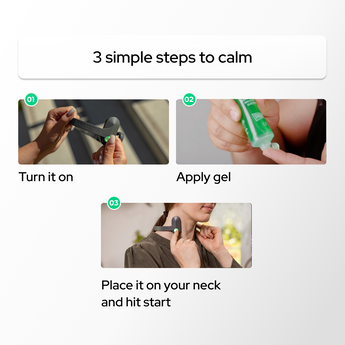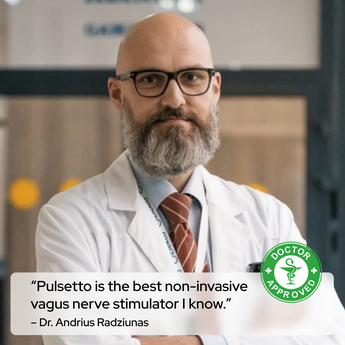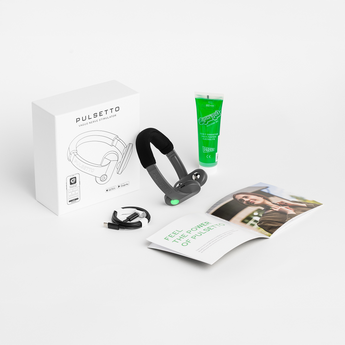What is Vagus Nerve Stimulation?
The vagus nerve, also known as the tenth cranial nerve, is a critical part of the parasympathetic nervous system. It connects the brain to various organs in the body and is responsible for regulating functions such as heart rate, digestion, and respiratory rate. Vagus Nerve Stimulation (VNS) is a medical procedure that involves the use of electrical impulses to activate the vagus nerve, offering a potential solution for a range of health conditions.
Vagus Nerve Stimulation (VNS) is being used in more and more ways to help people with various health problems. Here are some of the main areas where it’s making a difference:
When is VNS used?
VNS therapy for epilepsy
Epilepsy, characterized by recurrent seizures, can be challenging to manage. VNS therapy can reduce how often these seizures happen. It does this by sending tiny electrical signals to the brain to control abnormal activity. It’s a useful option for those whose seizures don’t get better with usual treatments.
VNS for depression
For individuals with treatment-resistant depression, VNS offers a lifeline. By stimulating the vagus nerve, it influences mood regulation. This form of therapy is often considered when other treatments, like medication and psychotherapy, prove ineffective, providing an innovative approach to mental health care.
VNS for stroke rehabilitation
After a stroke, people might have trouble moving or thinking clearly. VNS can aid recovery by helping the brain rewire itself. This makes it easier for people to regain their strength and abilities.
VNS for stress and anxiety
Chronic stress and anxiety can take a toll on one’s quality of life. VNS therapy for these conditions targets the body’s stress response. By promoting relaxation and reducing anxiety levels, it offers a non-invasive approach to finding relief from the burdens of stress and anxiety.
VNS for sleep problems
Sleep troubles, like not being able to fall asleep or breathing problems during sleep, can be improved with VNS. It helps your body have a regular sleep pattern, making it easier to get a good night’s rest.
Types of Vagus Nerve Stimulation: What Stimulates the Vagus Nerve?
For a long time, Vagus Nerve Stimulation (VNS) was primarily associated with surgical procedures. However, modern advancements have introduced non-invasive solutions that offer alternatives. Let’s explore the various examples of vagus nerve stimulation,including both traditional surgical methods and the more recent non-invasive approaches.
Vagus nerve stimulation with surgical implants
Surgical VNS involves a small chest incision where a wire connects to the vagus nerve, delivering gentle electrical impulses. It’s mainly used for epilepsy and treatment-resistant depression. However, it carries risks like infections, hoarseness, and swallowing difficulties. It’s considered when other treatments fail, and benefits outweigh the risks.
Non-invasive vagus nerve stimulation (nVNS)
Non-invasive Vagus Nerve Stimulation (nVNS) is a modern alternative to surgery. Since its introduction in 1997, it has provided a more convenient option for various conditions. nVNS includes multiple device choices, each with its unique method. It’s particularly useful in treating epilepsy, depression, and pain.
One standout device is Pulsetto, an advanced non-invasive VNS tool. Pulsetto is a safe and easy-to-use device designed to effectively stimulate the vagus nerve. [For more information on Pulsetto, visit the website here https://pulsetto.tech/meet-pulsetto/ ].
Acupuncture and other forms of massage
Acupuncture and tapping have been explored as potential methods for stimulating the vagus nerve. While some studies suggest their possible benefits, it’s important to note that medical professionals typically do not endorse them as primary medical treatments. The scientific evidence supporting their effectiveness is limited, therefore, these methods are often viewed as complementary approaches rather than primary medical alternatives. It’s advisable to consult with healthcare providers to determine the most suitable treatment options for your specific needs.
Indirect stimulation
Indirect methods for vagus nerve stimulation involve engaging in relaxing activities with the aim of calming the vagus nerve. These activities, such as listening to soothing music or practicing meditation, don’t directly target the nerve but contribute to overall relaxation. They can be valuable as complementary practices to enhance well-being and alleviate stress. While not medical treatments on their own, these techniques are known for their potential to promote a sense of calm and relaxation, indirectly benefiting vagus nerve function.
Is VNS Safe? What Are the Risks of Vagus Nerve Stimulation?
Vagus Nerve Stimulation (VNS), particularly the surgical approach, comes with potential risks and complications. It’s essential to be aware of these factors before considering this treatment option.
Risks of Surgical VNS
Common risks of VNS include:
-
Infection: Infection can occur at the surgical implantation site.
-
Pain and Inflammation: Pain and inflammation are typical around the incision sites.
-
Nerve or Structural Damage: There is a risk of damaging the vagus nerve or surrounding structures during the procedure.
When VNS Therapy Might Not Be Advised:
-
Pregnancy: VNS is typically not recommended during pregnancy due to potential risks to both the mother and the fetus.
-
Breathing Problems: If you have conditions like asthma, sleep apnea, chronic obstructive pulmonary disease, or other lung diseases, VNS may not be suitable as it can worsen these issues.
-
Active Peptic Ulcer Disease: VNS may exacerbate peptic ulcers, so it’s generally avoided in individuals with this condition.
-
Insulin-Dependent Diabetes Mellitus: VNS can affect blood sugar levels, which might be problematic for individuals with insulin-dependent diabetes.
-
Single Vagus Nerve: If you have only one vagus nerve (unilateral vagus nerve), VNS won’t be effective as it requires both nerves.
-
Dysautonomias: These conditions involve abnormal autonomic nervous system functioning, and VNS might not be suitable.
-
Other Brain Stimulation: If you’re already receiving other forms of brain stimulation, combining them with VNS can have unpredictable effects.
-
Heart Arrhythmias or Abnormalities: VNS may influence heart rate and rhythm, necessitating caution in individuals with heart conditions.
-
Psychiatric History: A history of schizophrenia, schizoaffective disorder, delusional disorders, or rapid cycling bipolar disorder might disqualify you from VNS.
-
Previous Neck Surgery Involving Vagus Nerve: If you’ve had surgery on your left neck involving vagus nerve removal, VNS may not be feasible.
Does VNS Have Side Effects?
Invasive VNS does have potential side effects, and these can vary in intensity from person to person. Common side effects and complications associated with invasive VNS may include:
- Voice Changes
- Coughing or Shortness of Breath
- Tingling or Prickling Sensations
- Neck Pain
- Difficulty Swallowing
- Headache
- Nausea
- Sleep Disturbances
- Worsening of Seizures or Mood
Non-invasive VNS methods are often considered safer because they do not involve surgical implantation or direct contact with the vagus nerve. This reduces the potential for certain risks and side effects that are commonly associated with the invasive VNS procedure.
How can I stimulate my vagus nerve at home?
Stimulating your vagus nerve at home can be done through various techniques, including:
-
Deep Breathing: Engage in slow, deep breaths to stimulate the vagus nerve. Breathe in for a count of four, hold for a count of four, and exhale for a count of four.
-
Meditation: Regular meditation practices help activate the vagus nerve and promote relaxation. Try mindfulness or guided meditation.
-
Yoga: Specific yoga poses and stretches can stimulate the vagus nerve, such as the cobra pose or neck stretches.
-
Cold Exposure: Exposure to cold water, like a cold shower or face splash, can activate the vagus nerve and increase alertness.
For more in-depth guidance on stimulating the vagus nerve at home, check out this article: How to Stimulate Your Vagus Nerve for Better Mental Health
Besides, non-invasive VNS devices, like Pulsetto, provide a convenient and safe way to stimulate your vagus nerve from home, without the need for surgery or invasive procedures. Learn more here: https://pulsetto.tech
FAQ
Is VNS used only for epilepsy?
No, Vagus Nerve Stimulation (VNS) is not used only for epilepsy. While it was initially approved for the treatment of epilepsy, it has since found applications in other medical conditions as well. Some of the conditions for which VNS therapy has been utilized include:
-
Treatment-Resistant Depression: VNS has gained approval as a treatment for individuals with treatment-resistant depression, which means they have not responded to other forms of therapy.
-
Bipolar Disorder: In some cases, VNS has been explored as a treatment option for individuals with bipolar disorder who have not responded to traditional treatments.
-
Cluster Headaches: VNS has shown promise in reducing the frequency and intensity of cluster headaches, a particularly painful type of headache.
-
Anxiety Disorders: Although not as widely used, VNS has been investigated as a potential treatment for certain anxiety disorders.
-
Chronic Pain: Research is ongoing regarding the use of VNS for managing chronic pain conditions, such as fibromyalgia and neuropathic pain.
-
Memory and Cognitive Enhancement: There is some interest in the potential for VNS to improve memory and cognitive function, particularly in conditions like Alzheimer’s disease.
What happens when the vagus nerve is triggered?
When the vagus nerve is triggered or stimulated, it can have a range of effects on the body, primarily associated with the parasympathetic nervous system. Here are some of the key functions and responses associated with vagus nerve stimulation:
-
Heart Rate: The vagus nerve helps regulate heart rate. Stimulation of the vagus nerve can slow down the heart rate, helping to lower blood pressure. This is often referred to as the “vagal brake.”
-
Gastrointestinal Function: The vagus nerve plays a major role in the digestive process. Stimulation of the vagus nerve can increase gastrointestinal motility and secretion of digestive juices, aiding in digestion.
-
Breathing: The vagus nerve influences the respiratory system, particularly by controlling the rate and depth of breathing. Activation of the vagus nerve can slow down and deepen your breath, promoting relaxation.
-
Anti-inflammatory Response: Vagus nerve stimulation has been associated with an anti-inflammatory effect. It can help reduce inflammation in the body, which is important for overall health and in the management of various diseases.
-
Stress Response: Activation of the vagus nerve can counteract the “fight or flight” response of the sympathetic nervous system. It promotes relaxation, decreases stress hormones like cortisol, and induces a sense of calm.
-
Pain Regulation: Vagus nerve stimulation has been used as a therapeutic approach for pain management in certain medical conditions, such as chronic pain and migraines.
-
Immune System: It communicates with the brain about the body’s immune response, helping to modulate immune function.
-
Emotional Regulation: The vagus nerve is involved in emotional regulation and social behavior. Its stimulation can affect mood, and it is linked to conditions like depression and anxiety.
What is the fastest way to calm the vagus nerve?
Calming the vagus nerve can be achieved through various techniques. Some common methods that help quickly activate the vagus nerve’s calming response include:
-
Deep Breathing: Slow, deep breaths stimulate the vagus nerve, promoting relaxation and reducing stress. Inhale deeply for a count of four, hold for four, and exhale for four.
-
Humming or Singing: Humming or singing can stimulate the vagus nerve, as it activates the muscles in the throat connected to the vagus nerve.
-
Cold Exposure: A brief cold shower, face splash with cold water, or simply sipping cold water can stimulate the vagus nerve and promote alertness.
-
Gargling: Gargling with cool water can activate the vagus nerve and help restore a sense of calm.
-
Vagus Nerve Stimulation Devices: Non-invasive VNS devices, like Pulsetto, are designed specifically to stimulate the vagus nerve safely and effectively. They offer a convenient way to target vagus nerve activity for relaxation and stress reduction. These devices can be used in the comfort of your home and are safe and easy to use.
While various techniques can help calm the vagus nerve, non-invasive VNS devices, such as Pulsetto, provide a focused and convenient way to achieve this. They can be an excellent choice for those seeking a safe and effective method for vagus nerve stimulation.
Takeaways
- VNS is a versatile therapy used for epilepsy, depression, stroke rehabilitation, stress, anxiety, and sleep problems.
- Modern non-invasive VNS options, like Pulsetto, provide convenient and safe alternatives.
- While surgical VNS carries risks, non-invasive methods offer a safer and effective approach to stimulate the vagus nerve.

























































